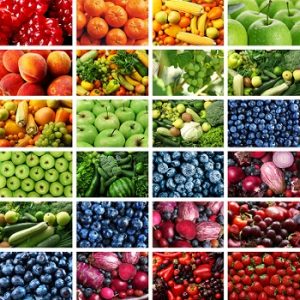
More evidence that low-calorie sweeteners are bad for your health
Studies show that artificial sweeteners can raise the risk of hypertension, metabolic syndrome, type 2 diabetes and heart disease, including stroke.

Natural Health News — The advice to ‘eat a rainbow’ brings with it a multitude of health benefits. Now, according to Spanish researchers, we can add good gut health to these.
Polyphenols are natural compounds found in plants, fruits, vegetables, cereals, tea, coffee and wine. They exist in two broad groups: flavonoids and nonflavonoids.
Their beneficial properties are dependent on their bioavailability, which is low compared to micro and macronutrients
So the first thing the research group from Instituto de Salud Carlos III, Madrid, Spain, looked at was the bioavailability of polyphenols and their impact on the human body.
“The bioavailability and effects of polyphenols greatly depend on their transformation by components of the gut microbiota,” the researchers write in the Journal of Nutritional Biochemistry.
“Different studies have been carried out to understand the gut microbiota transformation of particular polyphenol types and identify the microorganisms responsible.”
Even so, despite both polyphenols and gut microbiota being studied extensively, not much is known about their relationship with each other.
» Polyphenols are compounds in food that act as antioxidants and anti-inflammatories.
» An extensive review of the health benefits of polyphenols has shown that their major influence on health is through the gut.
» Eating more polyphenols supports the growth of bacteria in the gut that not only keeps us healthy, but aids the complete metabolism of the polyphenols themselves.
They note that only a small percentage of dietary polyphenols, around 5-10% of total intake, are directly absorbed into the small intestine. The rest are subjected to extensive biotransformations, aided by bacteria in the large intestine, which produce water-soluble by-products known as metabolites that are distributed to organs.
While most research focuses on the polyphenols themselves, the team notes that more study of these metabolites might help us understand more about how polyphenols function in the body.
Gut benefits = Health benefits
Previous studies have shown that polyphenols can be converted by colonic bacteria to bioactive compounds that can affect the intestinal ecology and influence host health.
Animal and human studies have both shown that certain doses of selected polyphenols may change the gut microbial composition, which can help some bacterial groups thrive.
Evidence reviewed for instance suggests that a rich source of flavonoids such as onion extracts has an inhibitory effect on pathogenic bacteria such as Streptococcus mutans and Streptococcus sobrinus as well as on Porphyromonas gingivalis and Prevotella intermedia, which are considered to be the main causal bacteria of adult gum disease (periodontitis). The polyphenols in raw cacao have been also been shown to fight the bacteria that cause tooth decay.
Red wine polyphenols have been associated with health benefits such as reduced blood pressure, trigylcerides and high-density lipoprotein cholesterol. Both red wine and green tea polyphenols strongly inhibit Helicobacter pylori – the bacteria that causes stomach ulcers. Another human study referenced in the review for example suggested the consumption of red wine polyphenols significantly increased the number of Enterococcus, Prevotella, Bacteroides, Bifidobacterium, Bacteroides uniformis, Eggerthella lenta, and Blautia coccoides-E.rectale group.
The increase in beneficial bacteria seen in the red wine study is important because, of the estimated that 500–1000 different microbial species inhabit the gastrointestinal tract, only a few bacterial species (e.g. Escherichia coli, Bifidobacterium, Lactobacillus, Bacteroides, Eubacterium) are involved in aiding the metabolism of polyphenols have so far been identified.
Evidence also suggests that polyphenols have potential benefits for immunity by reducing concentrations of the plasma C-reactive protein (CRP), which is a blood marker of inflammation.
“It is clear that dietary polyphenols and their metabolites contribute to the maintenance of gut health by the modulation of the gut microbial balance through the stimulation of the growth of beneficial bacteria and the inhibition of pathogen bacteria, exerting prebiotic-like effects,” the team conclude.

Please subscribe me to your newsletter mailing list. I have read the
privacy statement